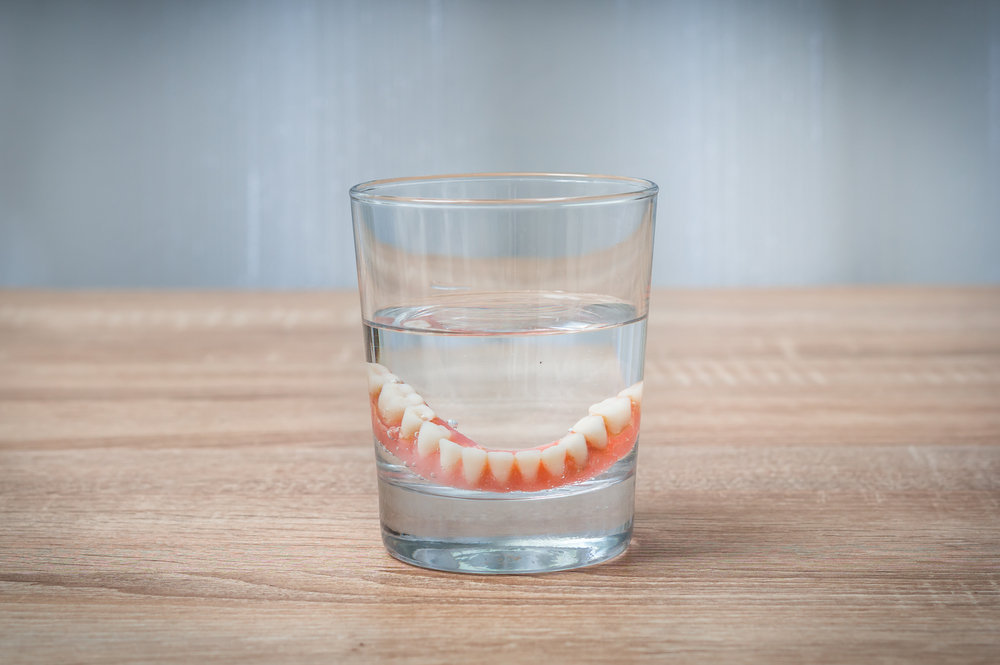Nearly 70% of adults in the United States are missing at least one tooth. Dental implants offer an effective solution for many of these individuals, allowing them to regain their smiles and confidence.
This article will discuss the benefits of dental implants, the steps to prepare for implant surgery, and how to maintain and care for them. We aim to help you understand the toothless solution and how dental implants can restore your confidence.
What Are Dental Implants
A single dental implant is an artificial tooth root made of titanium, surgically inserted into the jawbone to replace a missing tooth. Dental implants are a successful solution for people who suffer from tooth decay, gum disease or who have lost a tooth due to trauma or age. The success rate of dental implants is high, as is the satisfaction rate of patients who have received them.
The process of dental implant surgery involves placing the implant in the jawbone and anchoring it securely. This is done through a minor surgical procedure and is followed by a period of healing before a replacement tooth can be attached to the implant. During this time, it is important to follow proper oral hygiene practices to ensure the implant is successful.
Dental implants come in two types: endosteal and subperiosteal. Endosteal implants are the most common type, and they are used to replace a single tooth. A titanium post is placed in the jawbone, and a replacement tooth is attached to the post. Subperiosteal implants are used when the jawbone has deteriorated and is not able to support a post. In this case, the implant rests on top of the jawbone and beneath the gum tissue.
Dental implants are a safe and successful solution for those with missing teeth. They provide a secure base for the replacement tooth, offer long-term stability, and help maintain the health of the jawbone. With proper care and regular check-ups, dental implants can last a lifetime.
Benefits of Dental Implants
When considering the potential benefits of dental implants, it is clear to see why they have become a popular choice for restoring smiles. Dental Implants are artificial teeth that are surgically implanted into the jawbone and act as a replacement for missing teeth. Unlike traditional false teeth, Dental Implants are designed to look and feel like natural teeth, making them a comfortable and aesthetically pleasing option. In addition to acting as a tooth replacement, Dental Implants also provide support to the surrounding teeth and can help maintain the jawbone.
There are a variety of implant treatments available, depending on the type of implant needed. Dental implants can be used to replace a single tooth or multiple teeth or to support a full set of dentures. Different types of implants include endosteal implants, which are placed directly into the jawbone, and subperiosteal implants, which sit on top of the jawbone.
Dental implants are customized to fit each individual’s mouth. This ensures that the implant fits securely and naturally within the jawbone. Once the implant is placed, a dental crown is then attached to it to provide a more natural appearance. This crown can be matched to the colour of the patient’s natural teeth.
The healing time for dental implants ranges from 3 to 6 months, depending on the type of implant. During this time, the implant will fuse with the jawbone, creating a secure and stable foundation for the artificial teeth. Once the healing process is complete, the implant will be able to support a dental crown, which will help to protect the implant and provide a more natural look.
With a variety of implant treatments, a customized fit, and a secure foundation, dental implants can provide a long-lasting and aesthetically pleasing tooth replacement option.
Preparing for Implant Surgery
Building on the benefits of dental implants, preparation for implant surgery is the next step in the process of restoring confidence. Prior to any procedure, a detailed medical history must be taken by the dentist or oral surgeon to ensure the success of the dental implant procedure. This includes a thorough examination of any missing teeth, bone loss, periodontal disease, and damaged teeth. Afterwards, an individualized treatment plan is developed.
Once the treatment plan is established, the surgical placement of the prosthetic tooth is scheduled. During the implant procedure, a temporary crown is placed over the implant to protect it while healing. However, proper care of the implant is necessary for long-term success. This includes brushing, flossing, and regular visits to the dentist to monitor the implant’s health.
The process of dental implants typically takes several months, so patience is key. But with a combination of careful planning and adherence to proper care instructions, the individual can be on their way to restoring their confidence and having a full set of teeth again.
What to Expect During Surgery
Once the treatment plan is established, it is important to understand what to expect during the implant surgery. Dental implant placement is the process of replacing a single missing tooth or multiple missing teeth with artificial tooth roots that are surgically placed into the jawbone. During the procedure, the surrounding soft tissues and adjacent teeth are carefully protected, and the blood vessel is preserved to ensure healthy teeth. Root-form implants, metal implants, and conventional implants are available for edentulous patients. Titanium screws are then used to secure the implant to the bone.
During the implant procedure, the implant surgery will involve the insertion of the titanium implant into the jawbone, as well as the placement of a healing abutment. Depending on the complexity of the case, a cover screw may also be used. After the implant surgery is complete, a healing period of four to six months is necessary for the implant to integrate with the adjacent bone and become a permanent part of the jawbone. During this time, the bone will heal and secure the implant in place, making it possible for successful implants to replace missing teeth.
The implant procedure is an effective solution for restoring the patient’s confidence and restoring their ability to chew, speak, and smile like they used to with natural teeth. By understanding what to expect during the implant surgery, patients can be confident in their decision to restore their teeth with dental implants.
Recovering From Implant Surgery
After the implant surgery is complete, the patient will be required to take several weeks to heal, allowing the implant to integrate with the surrounding bone and become a permanent part of the patient’s jawbone.
The Dental Implant Systems, which provide a Guide to Implants for those with lost teeth, can be split into three categories: Immediate, Immediate-Delayed, and Delayed Implants. Generally, Immediate Implants are inserted on the same day, while Immediate-Delayed Implants may be inserted immediately but then have a delayed healing period. Delayed Implants may take weeks or months to heal, depending on the patient’s specific needs.
During the recovery period, the patient must be aware of potential implant diseases such as Peri-implantitis and Implant Bone Loss. These can be avoided through careful monitoring of the implant, as well as maintaining good hygiene. Proper Soft Tissue Management and Adjacent Tissue Connective Tissue are also essential for a successful implant.
Once the implant has fully integrated with the jawbone, the patient can then have an artificial crown put in place. This will restore the patient’s smile and give them the confidence they need. In some cases, more than one implant may be necessary. This is where the expertise of a dental professional is invaluable, as they will be able to help the patient make the right choices for their individual needs.
At the end of the day, dental implants can be a life-changing experience for those who have lost their human teeth. With the right care and attention, the patient can be sure to get the best results from their dental implant experience and enjoy a restored smile and newfound confidence.
Maintaining Your Implants
Once their implant has integrated with the jawbone, a patient’s own diligent maintenance regimen is essential for preserving their implant’s longevity and success. Proper oral hygiene plays a critical role in the success of implant placement, as the health of the gums and the underlying bone structure must be maintained. Without proper care, a patient is at risk for developing gum disease, which can cause the implant to become loose or even fall out. Additionally, excessive bleeding, infection, and loss of bone can all lead to implant failure.
To ensure a successful outcome, it is important for patients to follow the instructions of their dentist, and maintain their dental hygiene, including brushing and flossing twice a day. Patients should also attend regular dental check-ups to ensure that any plaque or tartar buildup is removed and to monitor the implant’s condition. The criteria for successful implant placement, as outlined by Laskin D and Bornstein MM, includes the use of precious metals and careful management of the implant’s environment.
In some cases, additional procedures may be necessary to maintain the implant, such as a bone graft or sinus lift. If a patient is experiencing pain or discomfort, they should contact their dentist immediately for an evaluation. By following the instructions of their dentist and practising proper oral hygiene, patients can ensure that their implant is well-maintained and can continue to restore their confidence.
Alternatives for Dental Implants
Although dental implants are a reliable solution for tooth loss, there are several other alternatives that can help restore a person’s confidence. One of the most important aspects of any dental implant is its safe positioning. Alveolar nerve damage is a potential complication of implant positioning, but it can be avoided by using computer-aided dental implant planning. This technology is used to identify the optimal implant position and size for each individual. Long-term implant survival is improved when the implant is placed in bone and when the implant diameter is minimized. Small-diameter implants can reduce the risk of alveolar nerve damage and may be used in some cases.
Another viable alternative is the use of compound implants. These implants are used when the actual implant cannot be placed directly in bone. Compound implants are built from a variety of materials, including gold, and they are used to hold a crown in place. Compound implants are also used when there is not enough bone for a traditional implant.
Finally, there is the option of using computer-aided dental implant planning. This technology is used to identify the optimal implant size, orientation, and location for each individual. Computer-aided dental implant planning also enables specialists to create a three-dimensional digital model of the jaw, allowing for the placement of the implant in the best possible position.
Key Takeaways
Dental implants are an effective way to restore a person’s confidence and improve their oral health. Despite the cost and recovery time, the process of surgery, recovery, and maintenance can be “smooth sailing” for those who consult with an experienced dental professional.
Although they are not suitable for everyone, dental implants can give people the “winning smile” they have been longing for.
If you are looking for a lasting solution to restore your confidence and improve your oral health, see Dr Pierre Dentistry located in Edgecliff, NSW. With our experience in implanting and maintaining dental implants, we offer quality services and long-term satisfaction. Contact our office today to learn more about the benefits of dental implants.




